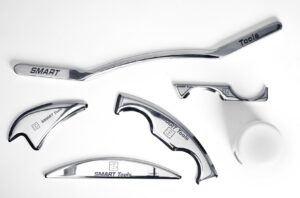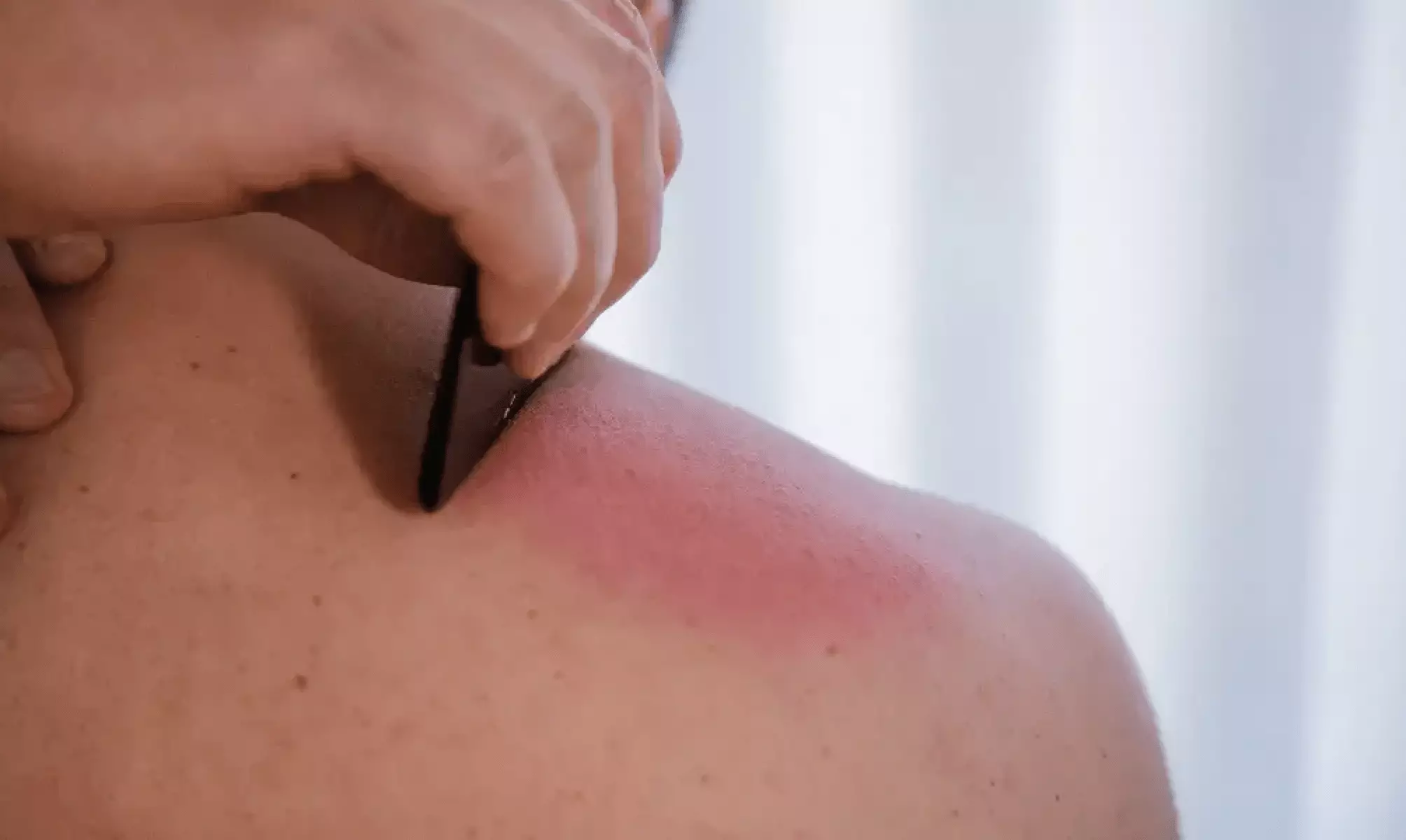Gua Sha vs. Muscle Scraping: Exploring the Benefits and Differences
Introduction
In the world of alternative medicine and holistic wellness, practices like Gua Sha and muscle scraping have gained significant attention for their potential health benefits. These techniques, rooted in ancient traditions, offer unique approaches to healing and rejuvenating the body. Nowadays, chiropractors have used this manual therapy in their daily practice. In this article, we’ll delve into the differences between Gua Sha and muscle scraping, exploring their benefits, methods, and how they can contribute to overall well-being.
Understanding Gua Sha
The History and Origins of Gua Sha
Gua Sha, originating in ancient China, has been used for centuries to address various health issues. Traditionally known as “scraping,” this technique involves using a tool to gently scrape the skin’s surface, which is believed to release trapped energy and stimulate blood flow.
How Gua Sha Works
When the skin is gently scraped, it promotes microcirculation, bringing oxygen and nutrients to the surface. This process is thought to help with pain relief, muscle tension, and even immune system support. The scraping motion also aids in the removal of toxins and promotes the body’s natural healing mechanisms.
Tools Used in Gua Sha
Gua Sha tools are typically made from materials like jade, rose quartz, or bian stone. These tools are designed to be used on various parts of the body, such as the face, neck, back, and limbs. The smooth edges of the tools are carefully applied to lubricated skin, creating a gentle friction that triggers the therapeutic effects.
Exploring Muscle Scraping

The Origins and Evolution of Muscle Scraping
Muscle scraping, also known as Instrument Assisted Soft Tissue Mobilization (IASTM), has its roots in ancient Eastern medicine. However, it has evolved over time into a modern therapeutic practice used by both athletes and healthcare professionals. The technique involves using specially designed tools to massage and manipulate soft tissues.
The Technique and Tools Involved
Muscle scraping employs tools with beveled edges to target specific areas of the body. Practitioners apply controlled strokes over muscles, tendons, and ligaments. This motion helps break down scar tissue, adhesions, and muscle knots, promoting better mobility and reducing pain.
Targeted Areas for Muscle Scraping
Muscle scraping is commonly used to address issues like chronic pain, limited range of motion, and muscle tightness. It’s particularly effective for conditions such as plantar fasciitis, tennis elbow, and IT band syndrome. By targeting areas of tension, muscle scraping aims to release the fascia and restore optimal tissue function.
Comparing Gua Sha and Muscle Scraping
Purpose and Goals of the Techniques
While both Gua Sha and muscle scraping focus on promoting healing and well-being, they have distinct purposes. Gua Sha primarily targets energy blockages and stagnation, aiming to restore balance and vitality. Muscle scraping, on the other hand, concentrates on breaking down scar tissue and adhesions, fostering improved muscle function.
Benefits for Physical Health
Gua Sha’s benefits encompass pain relief, improved blood circulation, and enhanced lymphatic drainage. It’s often used to alleviate conditions like migraines, chronic neck pain, and even respiratory issues. Muscle scraping’s advantages lie in its ability to reduce muscle tightness, enhance athletic performance, and accelerate injury recovery.
Benefits for Mental and Emotional Well-being
Both techniques have indirect effects on mental and emotional well-being. The relaxation induced by Gua Sha and muscle scraping can lead to reduced stress and anxiety levels. Additionally, the increased blood flow and release of endorphins contribute to an overall sense of relaxation and positivity.
Choosing the Right Technique for You
Considerations based on Health Goals
When deciding between Gua Sha and muscle scraping, consider your health goals. If you’re looking to address energy imbalances and promote holistic well-being, Gua Sha might be more suitable. Muscle scraping is an excellent choice if you’re aiming to improve muscle function, mobility, and sports performance.
Safety Precautions and Risks
Both techniques are generally safe when performed by trained practitioners. However, there are certain risks, such as bruising or skin irritation, associated with improper application. It’s essential to seek guidance from professionals and communicate any pre-existing medical conditions.
Combining Gua Sha and Muscle Scraping
In some cases, practitioners may recommend a combination of Gua Sha and muscle scraping for comprehensive healing. These techniques can complement each other, addressing different aspects of physical well-being and promoting a synergistic effect.
Incorporating Techniques into Your Wellness Routine
Frequency and Consistency
Whether you choose Gua Sha, muscle scraping, or both, consistency is key. Integrating these techniques into your wellness routine can lead to more noticeable and lasting results. Aim for regular sessions and listen to your body’s responses.
Professional vs. DIY
While it’s possible to practice Gua Sha and muscle scraping at home, seeking guidance from a qualified practitioner can enhance the effectiveness and safety of these techniques. Professionals can tailor the treatment to your specific needs and provide valuable insights.
Listening to Your Body
As you embark on your journey with Gua Sha and muscle scraping, pay close attention to how your body responds. Everyone’s experience is unique, so be attuned to the subtle changes in your physical and emotional well-being.
Real-life Experiences and Testimonials
Personal Stories of Transformation
Many individuals have experienced remarkable transformations through Gua Sha and muscle scraping. Stories of pain relief, improved mobility, and enhanced vitality serve as testimonials to the power of these techniques.
Case Studies on Health Improvements
Scientific research and case studies have also highlighted the positive impact of Gua Sha and muscle scraping. Evidence suggests that these practices can contribute to faster recovery from injuries, reduced inflammation, and improved tissue healing.
The Future of Alternative Healing
Growing Popularity and Mainstream Recognition
As interest in holistic wellness continues to grow, Gua Sha and muscle scraping are gaining mainstream recognition. More people are exploring these techniques as complementary options to conventional treatments.
Ongoing Research and Studies
The scientific community is increasingly interested in studying the mechanisms behind Gua Sha and muscle scraping. Ongoing research aims to provide deeper insights into how these techniques work and their potential long-term benefits.
Conclusion
In the realm of alternative healing, Gua Sha and muscle scraping offer valuable tools for enhancing physical, mental, and emotional well-being. While Gua Sha focuses on releasing energy blockages and promoting balance, muscle scraping targets tissue health and mobility. By incorporating these techniques into your wellness routine, you can embark on a journey of self-care and vitality.
Frequently Asked Questions
1. Is Gua Sha painful?
Gua Sha is not typically painful, but it might cause slight discomfort due to the scraping motion. The pressure should be adjusted to your comfort level.
2. Can I perform muscle scraping on myself?
While it’s possible to do muscle scraping at home, seeking guidance from a professional ensures proper technique and safety.
3. How often should I practice these techniques?
Consistency matters. Aim for 2-3 sessions per week to experience noticeable benefits over time.
4. Are there any side effects of muscle scraping?
Minor side effects like bruising or skin sensitivity can occur, but they are usually temporary.
5. Are Gua Sha and muscle scraping suitable for everyone?
These techniques are generally safe, but it’s important to consult a healthcare provider if you have underlying medical conditions.

